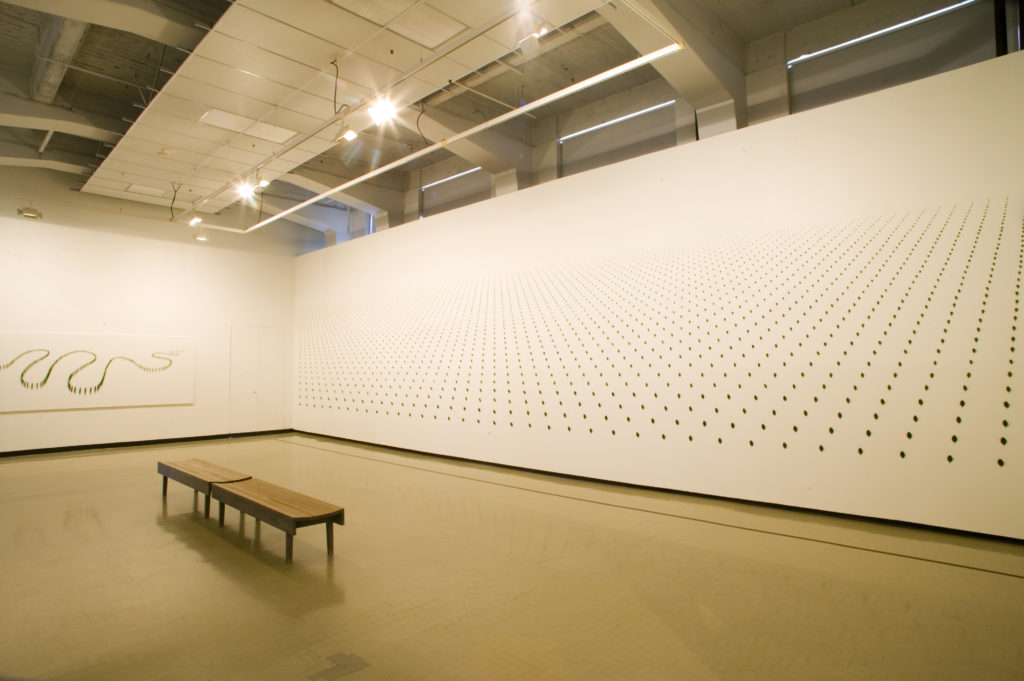CURATOR Gregory O'Brien OTHER VENUES Waikato Museum of Art and History, Hamilton, 12 May–1 July; Te Tuhi, Auckland, 14 July–2 September 2007; Rotorua Museum, 15 September–4 November 2007; Dunedin Public Art Gallery, 1 December–2 March 2008
Featuring work from the last twenty years, this is Elizabeth Thomson’s first survey show. For over a decade, she’s been working from a studio nestled at the edge of Wellington's Town Belt. Her work incorporates a diversity of media, formats, and scales, ranging from small etchings to immersive sculptural installations.
Attuned to the natural world, Thomson is inspired by the formal qualities of insects and plants, skins and cells. Her early photo-etchings celebrate the surreal quality of the microscopic world. For instance, in Queenie and Violet (1994), two women stroll through a dense, cellular landscape.
Some of Thomson's works look like enlargements of such microscopic scenes. Forbidden Fruit (2005) suggests a close-up of the dimpled surface of a piece of fruit. This work is iridescent green, or, as curator Gregory O’Brien claims, ‘a core sample, a chunk excavated from the very idea of greenness’. Tiny handmade glass spikes protrude from it.
While some works replicate nature's randomness—for instance, suggesting hairs on the surface of a leaf or skin—most reorder nature according to strictly geometric principles. Consuming a massive wall, the dazzling Flight Test (2005–6) is composed of thousands of precisely placed, handmade zinc leaves of different sizes. A perspective grid determines the leaves' distribution. As leaves get smaller, they appear distant. The work creates an illusionistic space—the sensation of flying.
Thomson often imputes a decorative, wallpaper-like order to nature, constraining nature with culture. The Black and Whites (2005) is a checkerboard pattern of larger-than-life moths, while Casa Pintoresca (2002–6), a towering wall installation in the foyer, is a diagonal grid made of thousands of painted bronze elements that mimic petals and stalks.
In the Dominion Post, Thomson says: ‘I spend ages and ages working out exactly where works go, working within millimetres all the time.’





















































